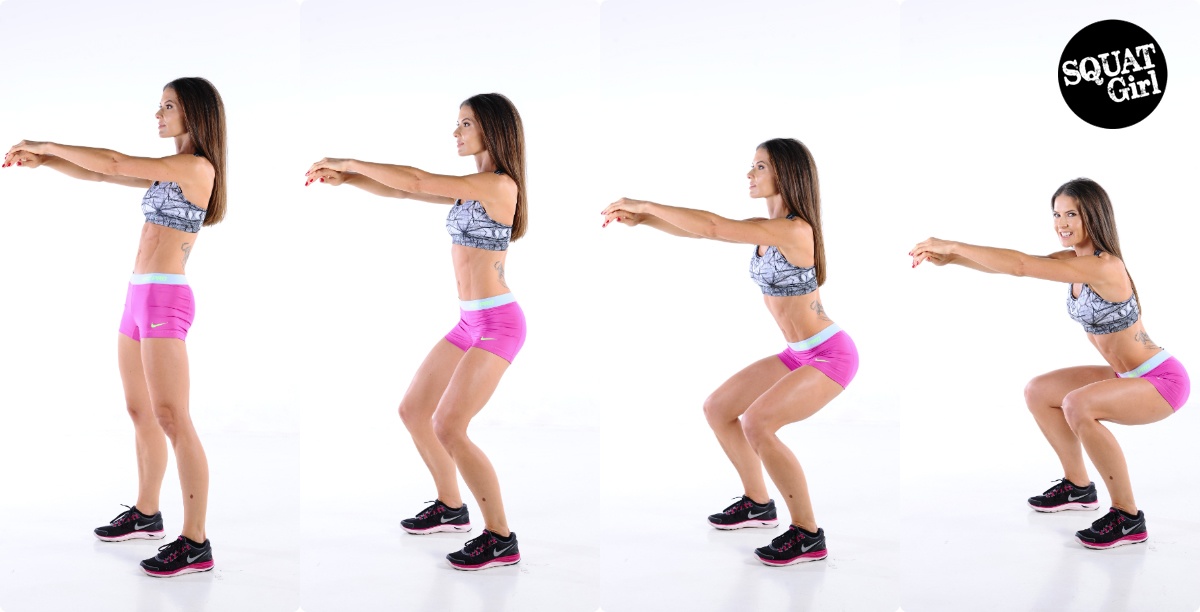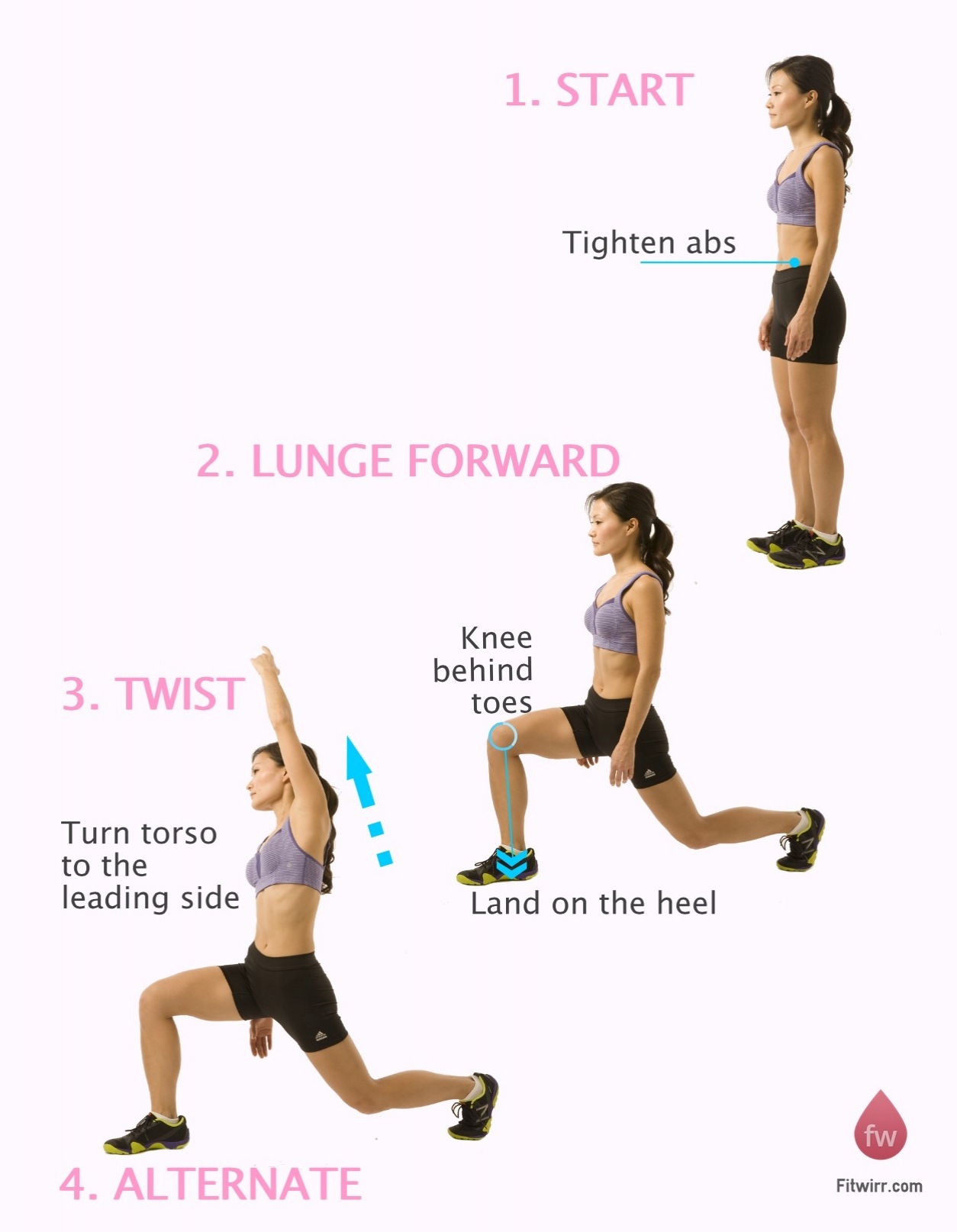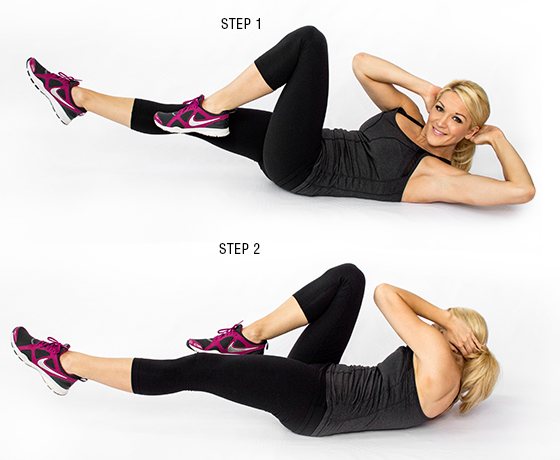Exercise is extremely important in maintaining and obtaining a healthy lifestyle. However, confusion comes into play when we see all the different types of exercises we can do, the number of machines with different resistant levels and speeds and the daunting weight rooms, it’s no surprise we’d opt out and just stay in the comfort of our own homes. Understanding which exercises are best for you is key to establishing an effective workout routine that you’ll be able to stick to.
The 15 Simple Exercises
Cardio:
Cardio is a great form of exercise, especially because it comes in so many different variations. So why is it good for your heart? Any exercise that gets your heart rate up will increase blood flow, and good heart health is essential in ensuring blood flow happens easily around the body to keep all your other organs with a sufficient amount of blood. In the first 15–20 minutes of cardio exercises, your body will tend to burn excess carbohydrates, but into longer durations, your body will start to burn off fat. This is not only great news for your waistline but it will also reduce the amount of stress on your heart. This stress reduction will make it less likely for you to suffer from any type of cardiac arrest, attack or any other cardiovascular problems. After a while of doing cardio, you will notice a massive difference in how you’re feeling—walking up stairs won’t be as strenuous, you’ll be able to rush for that bus or train without getting completely flustered and you’ll also find that you have more energy and are sleeping better.
1. Walking
Walking is a great way to start off a cardio programme. Don’t make it a leisurely stroll; make sure you’re moving quickly—a brisk walk is ideal. Make sure you get that heart rate up & build a bit of a sweat up! Start off between 15–20 minutes a day if you can. If this is too much or not enough, change it to suit your individual needs. Remember not to jump in too much too soon, take your time and build yourself up gradually.
2. Running
If walking is too slow or easy for you, then you can try running or jogging. This will be sure to get your heart rate up! If you’re new to running, start off doing some interval work so you’re combining running and walking. Be sure to wear appropriate running shoes & if you can, try to run on grass first as it puts less pressure on your joints.
3. Hiking
If running is too much and walking is to boring then give hiking a go! Climbing up and down those slopes and across different terrains will get your heart going and you’ll certainly have nice view to distract you from all the work you are doing. Make sure you have the right, supportive footwear, a map of the route you’re taking and bring plenty of water too!
4. Cycling
Cycling is a great form of exercise and is exciting too with the places it can take you! Be sure to get your heart pumping again, you can do interval training on the bike too—just increase your pace or your gear for 30 secs–1 min then come back down to a lower level to rest and then do it again. Make sure you wear the required safety gear and use relevant traffic signals if you’re on the roads!
5. Rowing Machine
This is a sure-fire way to get your heart going and to burn fat. Rowing machines use the biggest muscles in the body: your legs and your back. So you can be sure that your heart will be working hard to get the blood flowing around your whole body. Be sure to strap your feet in properly, position yourself comfortably so you’re not putting so much stress on your back & remember to start off at a lower level to build yourself up—if you’re not sure you’re doing it right as a member of staff or a personal trainer & they’ll be happy to help!
6. Swimming
For those of you who have sore or fragile joints, swimming is an ideal form of cardio as it doesn’t put any pressure on your joints. You could also try water aerobics if you don’t like the idea of swimming up and down continuously. Always be sure to pace yourself in the pool and to stay out of deeper water if you’re not a confident swimmer.
7. Skipping
Skipping is a fantastic way to get your heart pumping. It will only take a short amount of time before you begin to feel tired if you’re not used to it. But the good thing is that you don’t have to do a whole lot to reap the benefits. Start off by doing it in intervals; 10–20 secs for no less than 5 minutes and then work your way up to doing it in longer sets.
Strength Training
While cardio will help get your heart going, strength training will ensure it stays strong. This type of training is to build and strengthen muscles and seeing as your heart is a muscle it seems logical that this would benefit it. Having a strong heart muscle will mean that it’s under less pressure to pump blood around your body and can work with ease to keep you alive. Strengthening the walls of your heart will make it less likely for you’re to suffer from myocardial ruptures, which is where the walls of the heart can tear due to thinning or weakness.
8. Plank
Planks are great; they’re a full body static workout. By using multiple muscle groups your heart will have to work to ensure they all get the blood supply they need. Aim for 30 sec–1 min. If a full plank is too hard, start off in an elbow plank position and be sure to keep your back and bum in line and parallel to the floor.
9. Squats
With or without weights squats will get your heart going. They’re extremely effective in burning calories which means your heart is working to do so! Be sure to keep your back straight and don’t let your knees past the tip of your feet when you bend.
10. Lunges
Again it’s effective with or without a weight. Lunges are good for your abs because of the control in movement and balance but they also workout your legs which, as mentioned before, are one of the biggest muscles in the body and that means your heart is working hard to keep them moving! Remember to keep your back straight, moving slowly and fluidly with the motion.
11. Mountain Climbers
These are very effective but that also means they’re not easy! This exercise will work your core, your arms and your legs. Which is great news for your heart because it’ll have to work hard but so will you! Start off in a high plank position, then in alternating movement pull your knee towards your chest. Keep your neck neutral and your back and bum in line. Start off by doing 10 secs on 10 secs off for 1 minute until you get used to the motion.
12. Bicycle Crunches
This will work mostly your core, but you’ll be using you’re back muscles and legs too to keep the momentum. This will definitely build up your heart and keep it strong! Start off lying on your back, bring your legs up into a 90-degree angle and lift your shoulders off the ground with your hands behind your head. In one motion bring your left knee up towards your right elbow that will be moving across to meet it; do this on the other side and alternate between them continuously for as long as you can. Be sure to keep your neck neutral and extend your legs fully.
13. Machines
If you get the chance to go to the gym you can use whatever weight machine you like. Each should get your heart rate up & heart working which will mean it’s getting stronger. Be sure to read the instructions carefully and double check with a member of staff if you’re unsure and with you doctor if you’re unsure if you should use them.
Cardio and Strength Training Combined:
You don’t have to do cardio and strength separately; you can combine them and it’ll more than likely be just as good, if not better for you! These types of exercises will get your heart rate up just as you would while doing cardio but incorporate strength elements to build muscles and keep you fit and strong. It’s also a good way to burn fat too—all of which will increase the health of your heart and getting your waistline looking smaller!
14. Body-Pump Classes
This challenges all of your major muscle groups by using the best weight-room exercises such as squats, presses, lifts and curls. I can guarantee that will get your heart going and will work muscles you didn’t even know you had. It is a very convenient class and you’ll be glad you went! Make sure you use the appropriate weights and listen to the instructor to ensure you’re doing all the exercises correctly.
15. Circuit Training
I personally love circuit training, it’s so much fun. You do a variety of exercises which will mean you’re using different muscle groups and thanks to the different exercises it means the intensity will vary with each. This will mean your heart will work harder during certain exercises and this is what will help make it stronger and help you to burn fat! Make sure you listen carefully to instructions and again use the appropriate weights.
20 Healthy Foods & Recipes
As I mentioned previously the importance of eating the right foods and finding that balance between food and exercise. One thing we must make sure is that we actually enjoy the foods we are eating. I’ve looked around and pulled up some of the best foods for your heart and some delicious recipes to go with them. So let’s get started!
1. Oatmeal
A great way to start your day is with a hot bowl of oats. They are full of omega-3 fatty acids and potassium. Oats are packed with fibre which will keep you full and it will also help lower levels of LDL (bad) cholesterol which will keep your arteries clear! Add some fruit to add more flavour and work it up to include one of your 5-a-day. Find some more recipes here.
2. Salmon
Salmon is a great source of omega-3 fatty acids which can effectively lower blood pressure and prevent clotting. Two servings a week can significantly reduce your risk of a heart attack. So how to incorporate into a meal? Try some grilled salmon, with some watercress, salad and a poached egg. Here is how to do it.
3. Avocado
I personally love avocado! It can lower bad cholesterol as it’s packed with monounsaturated fats. Use it as a substitute for butter and put it on your toast with a poached egg, chop it up and add it to your salad or mix it with a banana, some low fat yoghurt or milk and have it as a smoothie! Here is one of my favourites.
4. Olive Oil
Again, packed with monounsaturated fats it will help lower cholesterol and reduced your risk of heart disease. Use it cooking instead of sunflower oil, drizzle it over some season chicken or drizzle it over some chopped up sweet potatoes baked in the oven to give them that crispy texture. Click here to find more ways to add olive oil to your meals.
5. Nuts
Here comes that omega-3 fatty acids again and being packed with mono and polyunsaturated fats only means good things for your heart! Nuts are full of fibre so are great as a snack in between meals or you could add them to your salad to add that crunchy element. Don’t think adding nuts is a great idea? Here is why it is.
6. Berries
Strawberries, blueberries, raspberries, blackberries or whatever berry you like will help keep your heart healthy. They are full of anti-inflammatories which help lower the risk of cancer and heart disease. Add them to your cereal, mix them up in a smoothie or have them as part of a healthy snack! Here is an easy way to mix it up berry style.
7. Spinach
Spinach is full with folate, potassium, lutein and fibre. This combination will help reduce your risk of heart disease significantly. It is also easily incorporated into your diet. Try Tortellini, a spinach pasta. Add some tomato and basil sauce and you will have one of your five a day and a healthy pasta dish which is satisfyingly filling! Dying to try it? Here is how it is done.
8. Flaxseed
That omega-3 fatty acid is here again but this time it’s matched with omega-6 fatty acids which will help lower that bad cholesterol even more! Sprinkle it over your oatmeal in the morning or add it to your salad for the ultimate healthy meals! Here is a whole range of ways to add flaxseed to your diet.
9. Red Wine
Yes, you did read that right! It says red wine! As opposed to lowering bad cholesterol red wine actually helps to raise levels of good cholesterol. But take this within reason. Too much red wine can also have a negative impact on your health so relaxing with a glass after a long day or having it with a meal is fine, just remember to drink it responsibly! Click here for some more information on red wine.
10. Tuna
Packed with nutrients, folate and omega-3 fatty acids tuna is a great way to keep your heart healthy. Tuna salad, with mixed leaves, some seeds and a drop of olive oil is a great dish for lunch or dinner and will do amazing things for your heart. Here is how to make it.
11. Carrots
Carrots contain alpha-carotene, a carotenoid, which helps protect your heart against disease and bad LDL. Shred some over your salad or chop some up and have it as a snack. It’s got fibre in it too so it will help keep you full in between meals! Not sure how to incorporate it? Check this article out.
12. Broccoli
Vitamin C and E, potassium, folate, calcium and fibre broccoli is not only good for your heart but your health as a whole. A great recipe I found is baked potatoes, broccoli and cheese. It is delicious, worth the time it takes to cook and is packed full of goodness. Sounds good right? Well here is how to make it.
13. Edamame (Green Soy Beans)
Soy protein can help lower blood triglyceride levels and lower bad cholesterol levels. Packed with fibre too they’re a great addition to a meals or as a tasty appetizer. Check out these easy edamame recipes.
14. Tofu
This is not exclusive to vegetarians. It’s packed with heart-healthy minerals and polyunsaturated fats which will help lower the risk of heart disease and lower that bad cholesterol. You can add it to your soup or mix it up in a stir fry! Try out this recipe.
15. Sweet Potatoes
Swap your white potatoes for these! They won’t spike your blood sugar levels and they’re full of fibre, vitamin A and lycopene which are all good in keep you and your heart healthy and free from diseases and clots. Try sweet potato fries; add some cinnamon, paprika or any seasoning to give it that extra added taste. Here is how to make them.
16. Oranges
These are rich in cholesterol fighting fibres and potassium which help control blood pressure and promotes good heart health. A refreshing glass of OJ can go a long way! You can even make your own marmalade and here is how.
17. Barley
The fibre in barley helps to lower bad cholesterol and blood sugar levels too. This can easily be added to stews, soups or replace it instead of white rice in your dinner. Check this out and thank me later!
18. Low-Fat Yoghurt
While yoghurts are usually associated with good bone health, low-fat yoghurts can help control high blood pressure levels. Add some fruit for a healthy snack or use it as a base in any smoothie recipe. Check out how to perfect it here
19. Sardines
Packed with omega-3s in the form of fish oils, sardines can increase the good cholesterol and reduces the risk of sudden heart attacks in those who have suffered from them before. Sardines go great in a salad, fresh is best but you can grill them too if you want to change it up a bit! Here is a great grilled sardine salad recipe.
20. Green Tea
Green has many flavors and is a great substitute if you want to kick that caffeine habit. Rich in antioxidants it will deliver a number of cardio benefits including reducing the risk of blood clots. So on these upcoming cold winter evenings, why not snuggle down with a nice cup of green tea? Find out more ways to use green tea here. Featured photo credit: Fitness woman ready for running at sunset or sunrise on beach. Female athlete in powerful starting line pose. via shutterstock.com


